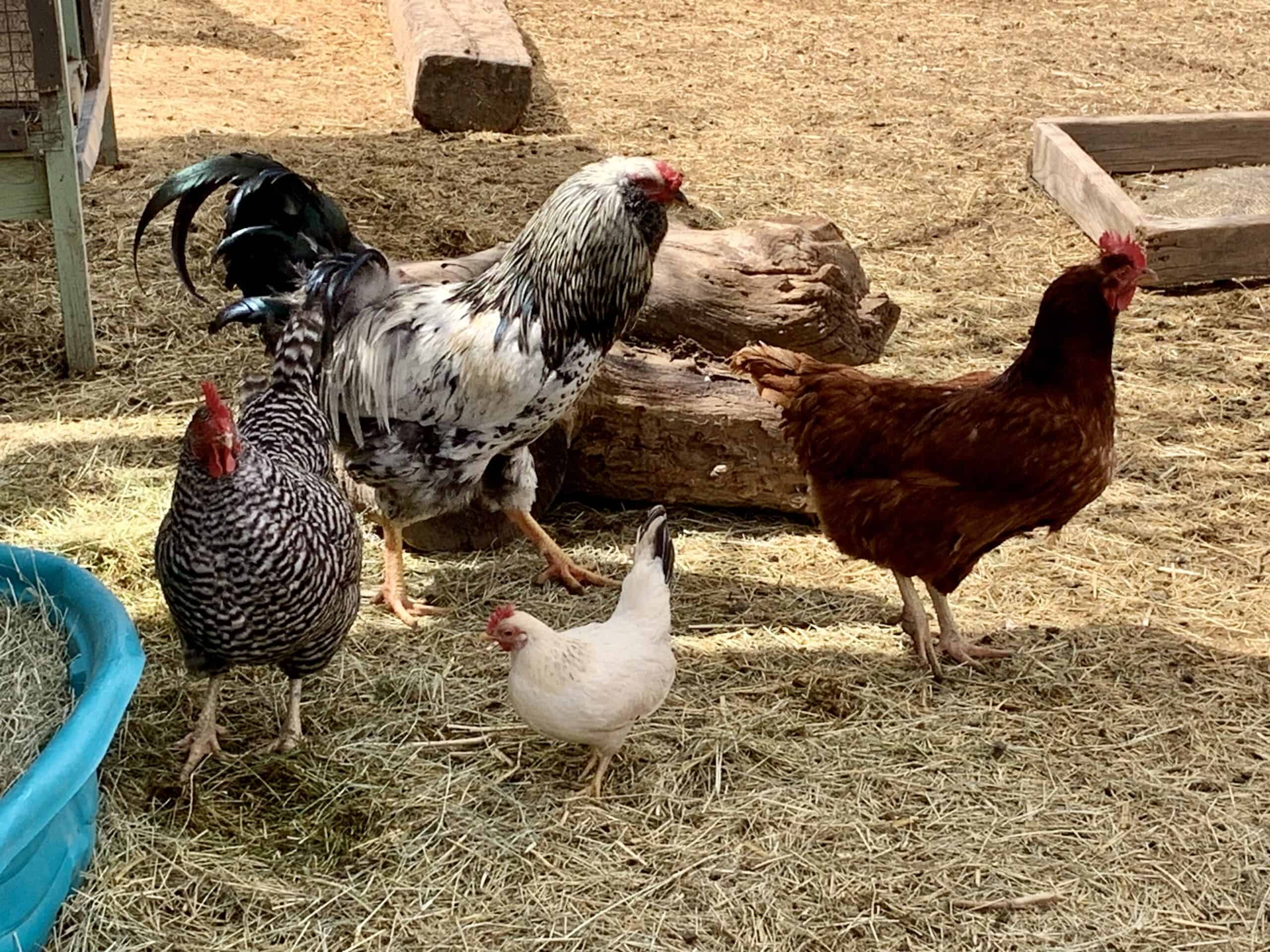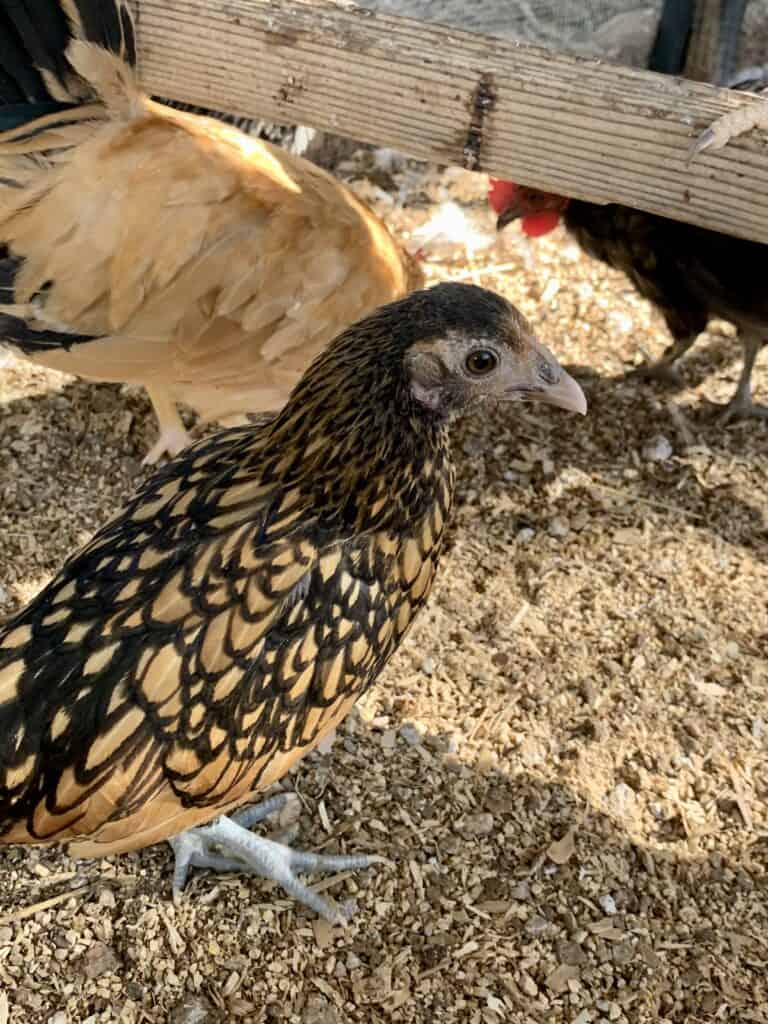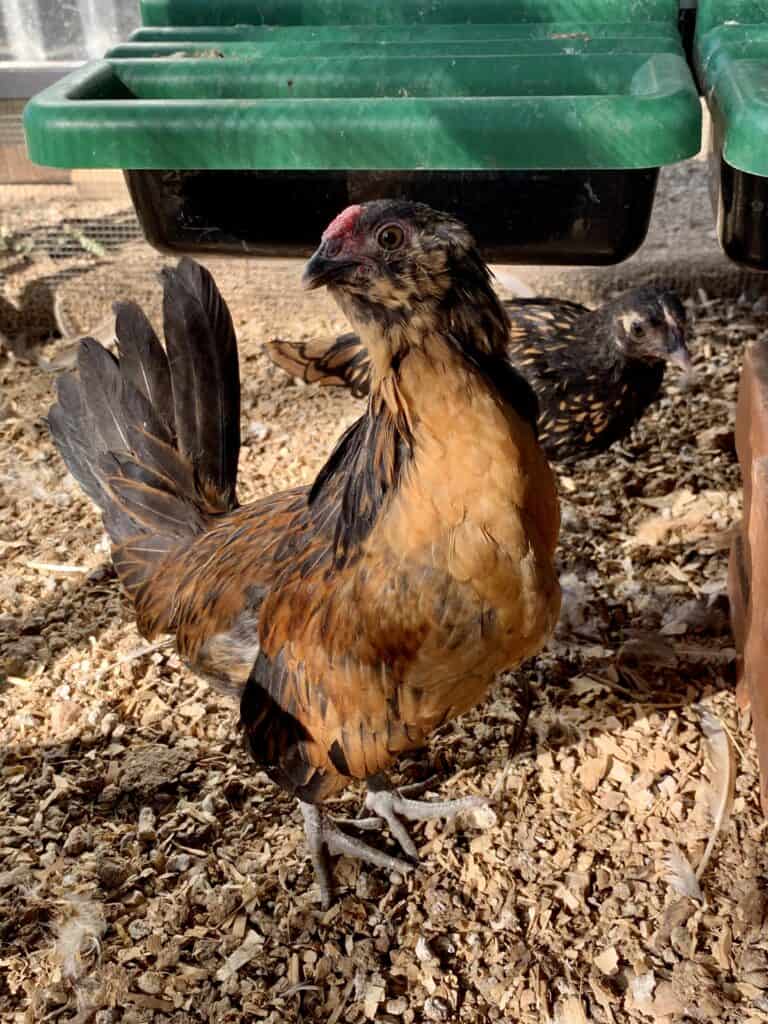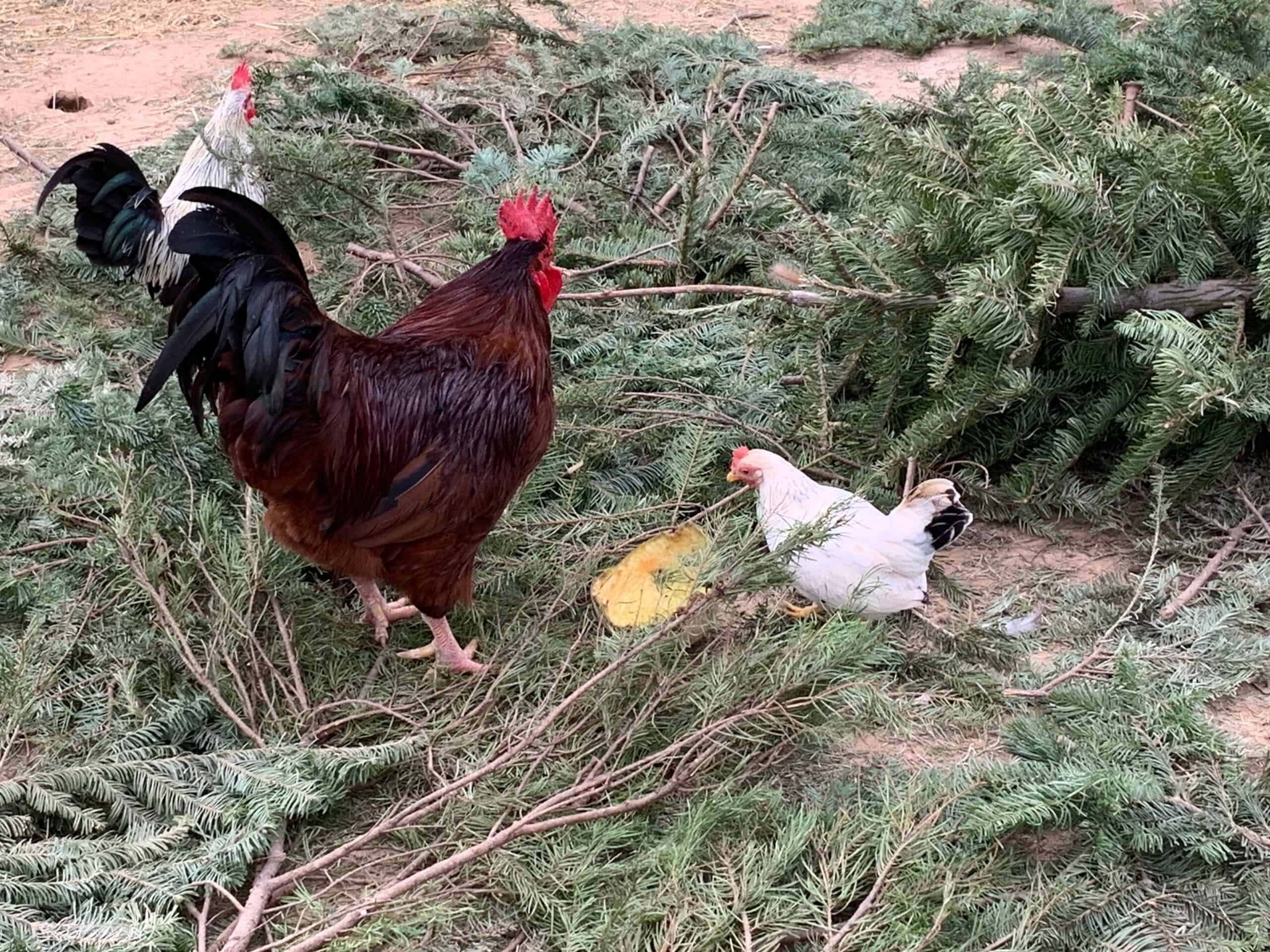Last Updated on April 19, 2024 by Alice Benny
A bantam chicken is a smaller version of a regular-sized chicken. Bantams are ideal to raise in backyards and urban settings because they require less space than medium and large chickens. Even though bantams are small, they are mighty. They will still produce a wonderful harvest of fresh eggs. They just lay smaller eggs.
Consider raising bantams if you are just starting out or if you have a smaller space and not a lot of land. Whereas regular chickens require 4 square feet per chicken, bantams need 2 square feet to thrive.
The bantam enjoys jumping up and down, which allows them to survive in small spaces as long as they can jump around. They have a lovely disposition.
When it comes to choosing chicken breeds, the bantam is the most energetic and friendliest. These chickens are bursting with personality and are very curious about their environment. We explain what to know about the bantam breed of chicken, including its characteristics.
Bantam Chicken Breeds
Here’s a small breakdown of the popular bantams:
- True Bantams
- d’Anver
- Nankin
- Sebright
- Serama
- Tuzo
- Rumpless
- Rosecomb
- Developed Bantams
- Old English Game
- Belgian Bearded
- Pekin
- Frizzle
- Japanese
- Booted
- Miniature Bantam
- Light Sussex
- Rhode Island Red
- Maran
- Australorp
- Ancona
- Araucana
- Leghorn

There are many different types of bantam. Many of these allow for versatile breeding, but the genetic traits can be hard to pinpoint for the Developed and Miniature versions. A true bantam is the Serama chicken. It’s the smallest chicken in the world. There isn’t a larger version.
History Bantam Chicken Breed
Explaining what a Bantam breed is can be a bit confusing because, unlike most chicken breeds, the word “Bantam” refers to its small stature, and not of its origin. These small chickens don’t have a completely known origin, but the name was originally introduced back in the late 1800s in Indonesia.
Sailors who would stop by the port city would refer to the chickens as being Bantam chickens due to being unique to the port city of Bantam, Indonesia.
After this, the breed had become popular in other suburban areas of the world for its small and convenient size.
There are three types of Bantam breeds:
- True Bantams
- Miniature Bantams
- Developed Bantams
The True Bantams are naturally occurring in nature and are just small in stature. Examples include Silkie chickens such as a Blue Silkie chicken or Black Silkie chicken.
The Miniaturized Bantams are bred from either a standard breed of choice or a specific small breed of chicken.
The last type, the Developed Bantams, is a small breed that has been genetically enhanced through human’s techniques.
After much genetic breeding, the true standard of bantam was born and spread across the world. The chicken generally does well in most warm climates, which makes it a favorite around the world. However, it can be mixed with other breeds of chickens to help give them dominant traits.

Bantam Rooster
Be sure to keep bantam hens separate from full-size roosters which can often be dangerous. If you choose to keep bantam roosters with bantam hens, be sure to have at least five hens per rooster.
Bantam Chicken Characteristics
With so many varieties, let us look into the characteristics that distinguish the Bantam breed in general.
Bantam Chicken Appearance
The appearance of Bantam can also be tough to explain due to their many genetic cross-breeds. Some range from large birds with black or white specklings while others are brown and black. Others result in crosses with warm-colored feathers such as white, cream, and red.
As you can see, they are very variable in genetics and looks. The American Bantam Association has recently added over 400 different kinds of chickens to their bantam chicken variety list.
This makes their appearance hard to describe. What mainly distinguishes a bantam breed is its small stature.
Many of the ones located in America are smaller than the standard size of chickens. These small bantams weigh between 16 and 30 ounces and can be up to one-half the size of a standard size six-pound chicken.
Golden Sebright bantam chickens weigh between 20 – 24 ounces.
Some larger cross-breeds of bantam, though, have started to become heavier. The standard bantam breed is either one-third or three fourth the size smaller than the standard size breeds. This allows them to produce the same quality products without taking up much space.
With so many varieties, it should go without saying that these chickens can be used for plumage.
If you have multiple breeds of bantam, you will essentially have plenty of different color varieties to choose from.
Bantam Disposition and Behavior
As for the disposition of the Bantam breed, these chickens tend to be very friendly and overall have sweet temperaments. They do well with other animals and are generally nice towards humans.


The roosters can be a bit aggressive towards each other and humans during mating seasons, but other than that, there are usually no problems. Due to the large variety of the Bantam breed, we always recommend doing individualized research on the type you’re getting. Genetics plays a huge role when it comes to chicken temperament.
If you research the mixes accordingly, then you should have no problem finding their individualized temperaments. Many bantam breeds are very agile and love to move around. Physical activity is a must for these small, energetic chickens, so they need to be able to rustle their feathers and move around. A majority of them enjoy flapping their wings and jumping around. If you can provide a place for them to roam, they will thrive.
Bantam Chicken Egg Laying Habits
Due to the chicken’s smaller stature, bantam eggs are smaller than the standard version of eggs. If we were to compare them to other breeds’ eggs, they would be around half the size. Many bantam breeds don’t start producing eggs until almost eight months into their lifespan. Ones linked to standard breeds, tend to produce larger eggs and also lay a bit sooner.
It varies from chicken to chicken, though. Be sure to choose a bantam from a breed of the best egg-laying chickens if your focus on raising chickens is eggs.
On average, the bantam hen will lay around four to five eggs every seven days. Some of the bantams get broody while others don’t. It’s highly dependent upon what parents the chickens had.
If they were sex-linked with two non-brooders, then you can expect non-brooding behaviors. We recommend you get an incubator just in case you plan on breeding them or using them as starter eggs.
Sex Linkage
Sex linkage is very hard to pinpoint due to them having over 400 different mixes. The True Bantams are either from Nankin, Sebrights, or Rose Comb chicken breeds.
On the other hand, Miniaturized Bantams were genetically enhanced with one parent chicken.
The common breeds for this are the Rhode Island Red, Orpingtons, or even the Cochin breeds.
As for Developed Bantams, they range in sex-linked genetics and parents. Pinpointing which breeds are used is nearly impossible.
Nonetheless, we’ve tracked some of the common ones which were used in other countries to create the Developed Bantams. These breeds are either the Cochin, Japanese, or Belgian chickens. Learn about Belgian Bearded d’Anver bantams.
Proper Care
Caring for your flock properly is important. The lifespan of most bantams ranges from four to five years.
- Keeping bantam chickens healthy is essential for their well-being
- Bantam breeds are prone to mite, lice, and other diseases
- Good nutrition and clean coops are crucial for their health
- Maintaining a warm coop helps prevent illnesses; it needs to be well-ventilated and not drafty
- Some bantams may suffer from common chicken diseases or unidentified ailments
Predators
Because of their small size, they will face many predators. Be sure to provide them with a secure coop and chicken run.
Are Bantams Right for Your Homestead?
If you’re looking for a small chicken that can produce a steady flow of eggs, then you will be pleasantly surprised with the bantam breed. Check for bantam chickens for sale in your area.
They are good for suburban areas due to their small size but also yield smaller eggs and less nutrition. For a homestead, they can be good if you’re limited on land. Small chickens such as a Silkie chicken can also be quieter than larger breeds.
Start with chicks, and enjoy these miniature chickens through maturity. You can acquire a bantam rooster if you have enough hens. With fertile eggs, you can hatch more bantam chickens.
We believe, though, that the large variety of looks and temperaments can be useful if you find a few varieties with ideal traits you’re looking for in chickens. Their price point isn’t that bad either, which can come in handy for beginners.
Best Bantam Chickens
They are often a good choice for families and children. When you raise them from chicks, they will become more friendly with people. The bantam chicken range in genetic factors and temperaments.
These small chickens are ideal for small spaces, those who don’t have the land to build a large chicken coop space, and in suburban areas. If you’re limited on space or want to add a small chicken coop to your homestead, bantams can help you achieve those goals. They also require smaller chicken nesting boxes.
Overall, these are cheerful and energetic chickens that can make a great addition to your backyard flock.
With enough room, bantam hens can easily produce up to four to five eggs per week. If you raise several, that is enough to support most families, but you will need to remember that the eggs are smaller than standard breeds.
When it comes to dealing with bantam fowl, we’d have to recommend doing your research before purchasing any varieties. Delaware Chicken
It’s important to understand what type of bantam it is and what breed the parents were. This will give you a better idea of how the chicken will act and if you’re providing it with the necessary care.
When it comes to rural living, it’s important to understand that a viable food source is recommended. The bantam chicken may be one of the most useful for those living in rural areas.

